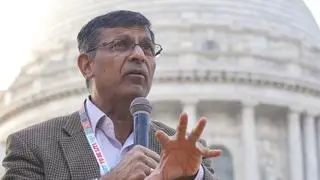For the first time in the country, capacity additions in the renewable energy sector were close to those of the thermal power segment in 2016-17.
The renewable energy sector has ended 2016-17 with a record capacity addition of 11,320 MW, though it fell short of its target (16,660 MW) for the year.
Capacity additions in thermal power segment stood at 11,551 MW during the fiscal.
The fiscal 2016-17 witnessed many milestones in the clean energy segment – total installed capacity of the sector crossed 50 GW and wind and solar sectors’ cumulative capacities crossed 30 GW and 10 GW, respectively.
As in the last year, wind and solar were the major contributors in 2016-17. Wind power sector added 5,502 MW against the targeted capacity of 4,000 MW, solar industry brought in 5,526 MW of new capacity to the grid against the target of 12,000 MW, according to the Union Ministry of New and Renewable Energy
Other segments such as bio power (biomass & gasification and bagasse cogeneration) and small hydro added lower capacities. Small hydro segment added 106 MW against the target of 250 MW, while bio power added just 122 MW against the target of 400 MW.
In addition to these, 171 MW of off-grid/captive power generation capacity came during the year.
Meanwhile, Bridge to India, a solar energy consulting firm, felt that project allocations in solar segment had slowed down and the government should focus on spurring strong growth in view of the capacity target of 20,450 MW for 2017-18.
As of March 31, 2017, the total grid-connected renewable power capacity in the country stood at 57,260 MW.
Total installed capacity of wind power segment stood at 32,280 MW. Solar occupied the second position with a total capacity of 12,289 MW. Bio power's total capacity stood at 8,182 MW. Small hydro and waste-to-power accounted for 4,380 MW and 130 MW, respectively.







Comments
Comments have to be in English, and in full sentences. They cannot be abusive or personal. Please abide by our community guidelines for posting your comments.
We have migrated to a new commenting platform. If you are already a registered user of TheHindu Businessline and logged in, you may continue to engage with our articles. If you do not have an account please register and login to post comments. Users can access their older comments by logging into their accounts on Vuukle.